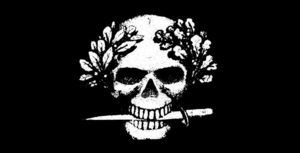Special Operations Task Group: Difference between revisions
No edit summary |
No edit summary |
||
| Line 33: | Line 33: | ||
==Organisation== | ==Organisation== | ||
SOG is organised into different groups comprising various capabilities. The core of the regiment are Special Operations Task Group 1, Special Operations Task Group 2, and Special Operations Task Group 3, which form the vast bulk of the regiment's operational strength. SOG-2 and SOG-3 are primarily responsible for Eracuran and Sidurian operations respectively, while SOG-1 has no primary geographic area of responsibility. | |||
In addition to the direct action groups, SOG also has Special Operations Task Group 4 and Special Operations Task Group 5. SOG-4 is responsible for intelligence and related affairs, while SOG-5 serves as the regiment's organic engineering and development wing. In this role, SOG-5 both provides technical and engineering expertise to direct action teams, and is also responsible for training the teams on new technology and equipment and overseeing their employment. | |||
[[Category:Acrea]] | [[Category:Acrea]] | ||
[[Category:MT]] | [[Category:MT]] | ||
Revision as of 11:43, 4 June 2022
| Special Operations Task Group | |
|---|---|
 The Skull and Dagger flag adopted by SOG in 1942 | |
| Active | 26 March 1942 - Present (82 years, 8 months) |
| Country | |
| Type | Special forces |
| Size | Classified |
| Part of | Royal Acrean Army Royal Acrean Marine Corps |
| Headquarters | Joint Forces Base Stennungsund, Götland, Acrea |
| Motto(s) | “Vad som än krävs.” "Whatever it takes." |
The Special Operations Task Group (Acrean: Spesielloperasjonsgruppe, abbreviated SOG) is a special operations force of the Acrean Armed Forces. It was first founded in 1942 as a deep reconnaissance and covert direct action unit. The unit performs a variety of missions, including special reconnaissance, counter-terrorism, direct action, hostage rescue, foreign internal defence, unconventional warfare, and raiding. Originally organised under the Army, the unit was combined with amphibious raiding units of the RAMC in 1955 to constitute a joint special operations unit.
History
SOG traces its lineage back to a variety of Stormjägare units of the Acrean Army and RAMC which date back to the Kunhegyes Conflict and Ruvelkan Civil War. These troops, colloquially called Stormers (a name later inherited by Acrean heavy mechanised infantry), pioneered infantry infiltration tactics and were tasked with performing the spearhead of infiltration missions, during which they frequently conducted focused small-team direct assaults and trench raiding. As the use of these tactics became a larger focus in Acrean infantry doctrine and was integrated on a broad scale, the original battalions formed a highly experienced and extremely well-trained core. By the 1920s, Stormjägare was as synonymous with the term "raiders" as it was with "shock troopers". When mechanisation began in the Acrean Army in the 1930s, many troops from these battalions were retrained as mechanised shock troops. Those that remained were withdrawn from their original battalions and reorganised into a few numbered battalions (which were never close to battalion strength) under the name Special Task Group (SAG), with each battalion specialising in different mission sets. These battalions were reorganised into a singular regiment in 1942, forming SOG.
Organisation
SOG is organised into different groups comprising various capabilities. The core of the regiment are Special Operations Task Group 1, Special Operations Task Group 2, and Special Operations Task Group 3, which form the vast bulk of the regiment's operational strength. SOG-2 and SOG-3 are primarily responsible for Eracuran and Sidurian operations respectively, while SOG-1 has no primary geographic area of responsibility.
In addition to the direct action groups, SOG also has Special Operations Task Group 4 and Special Operations Task Group 5. SOG-4 is responsible for intelligence and related affairs, while SOG-5 serves as the regiment's organic engineering and development wing. In this role, SOG-5 both provides technical and engineering expertise to direct action teams, and is also responsible for training the teams on new technology and equipment and overseeing their employment.